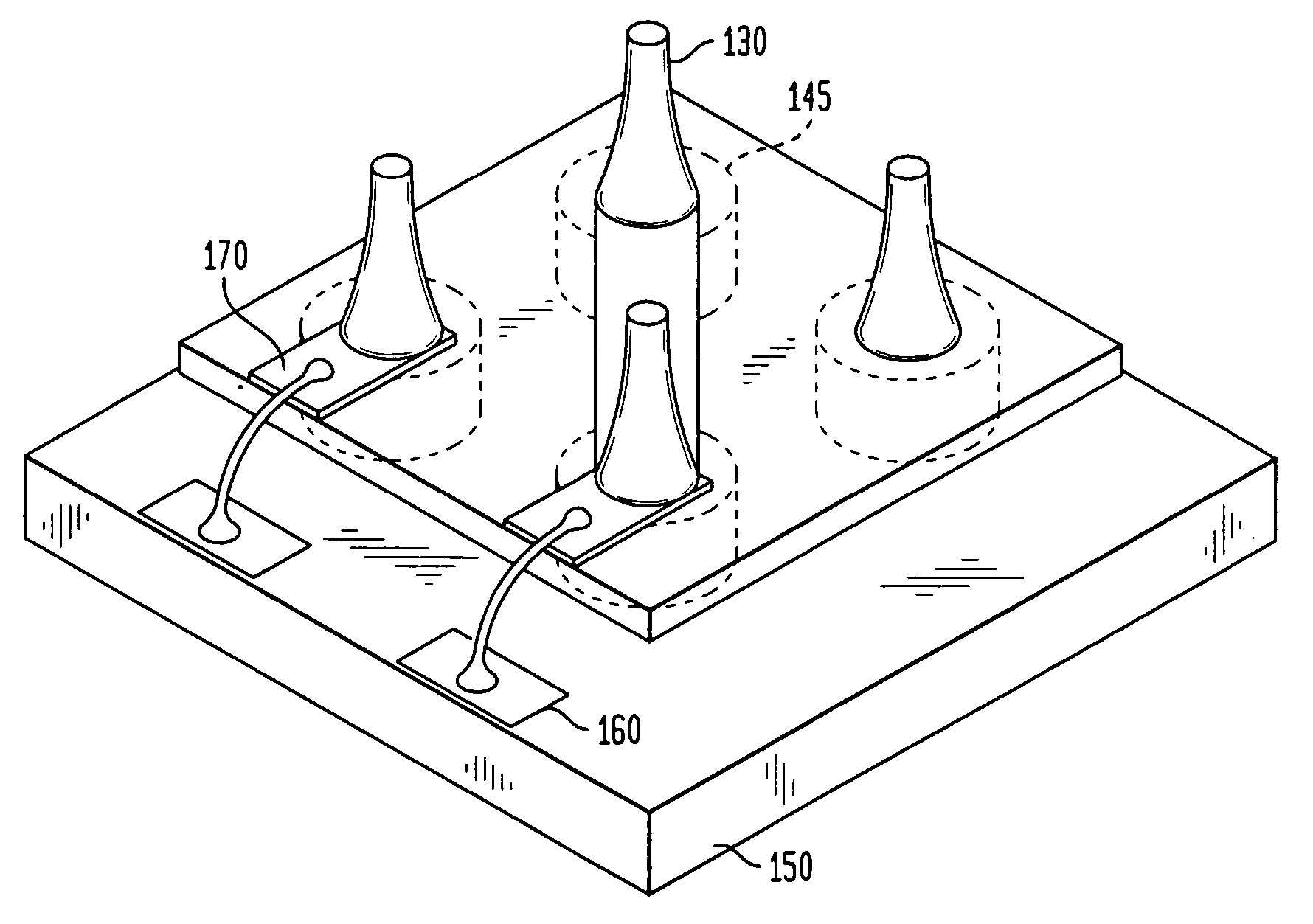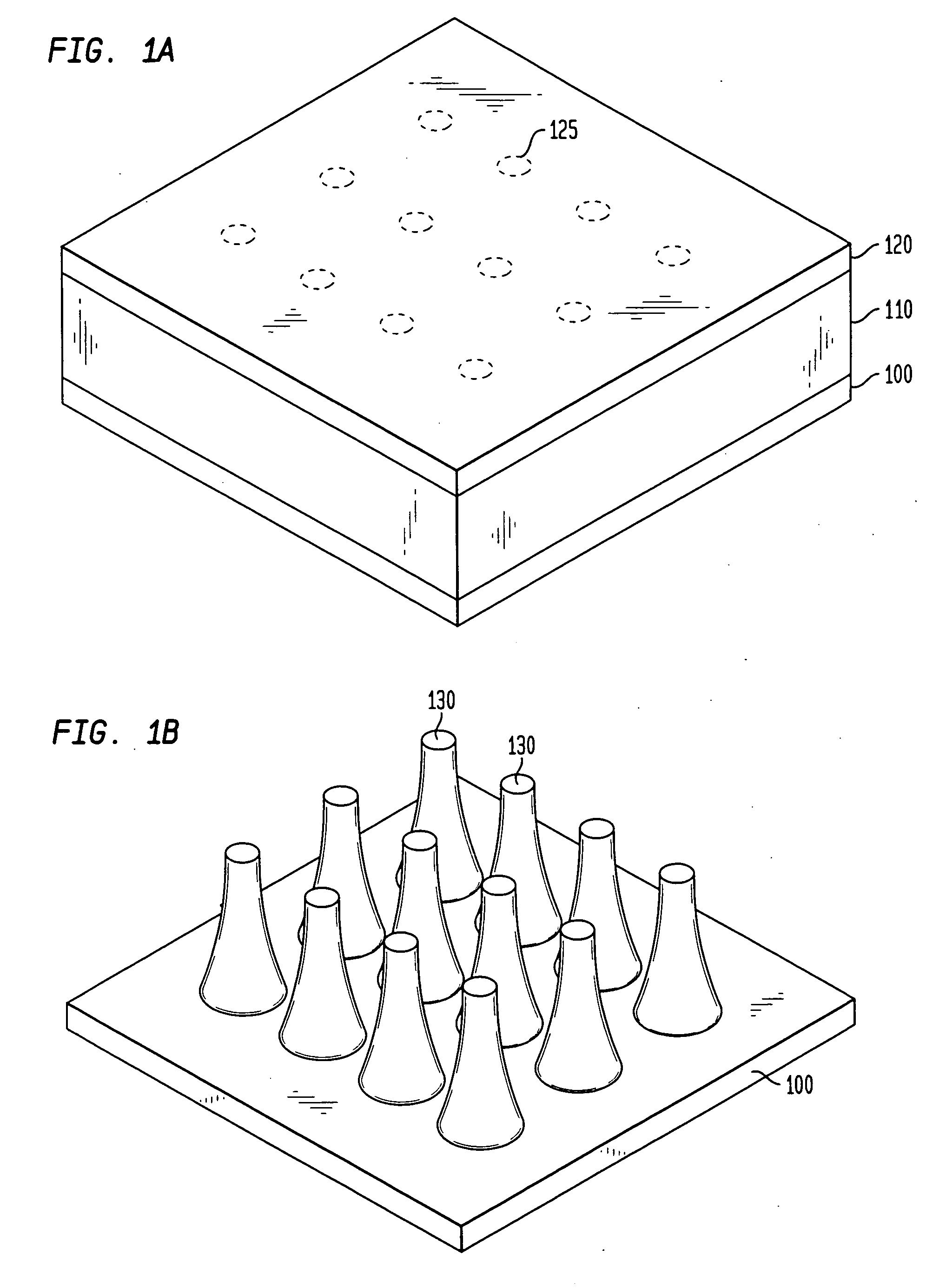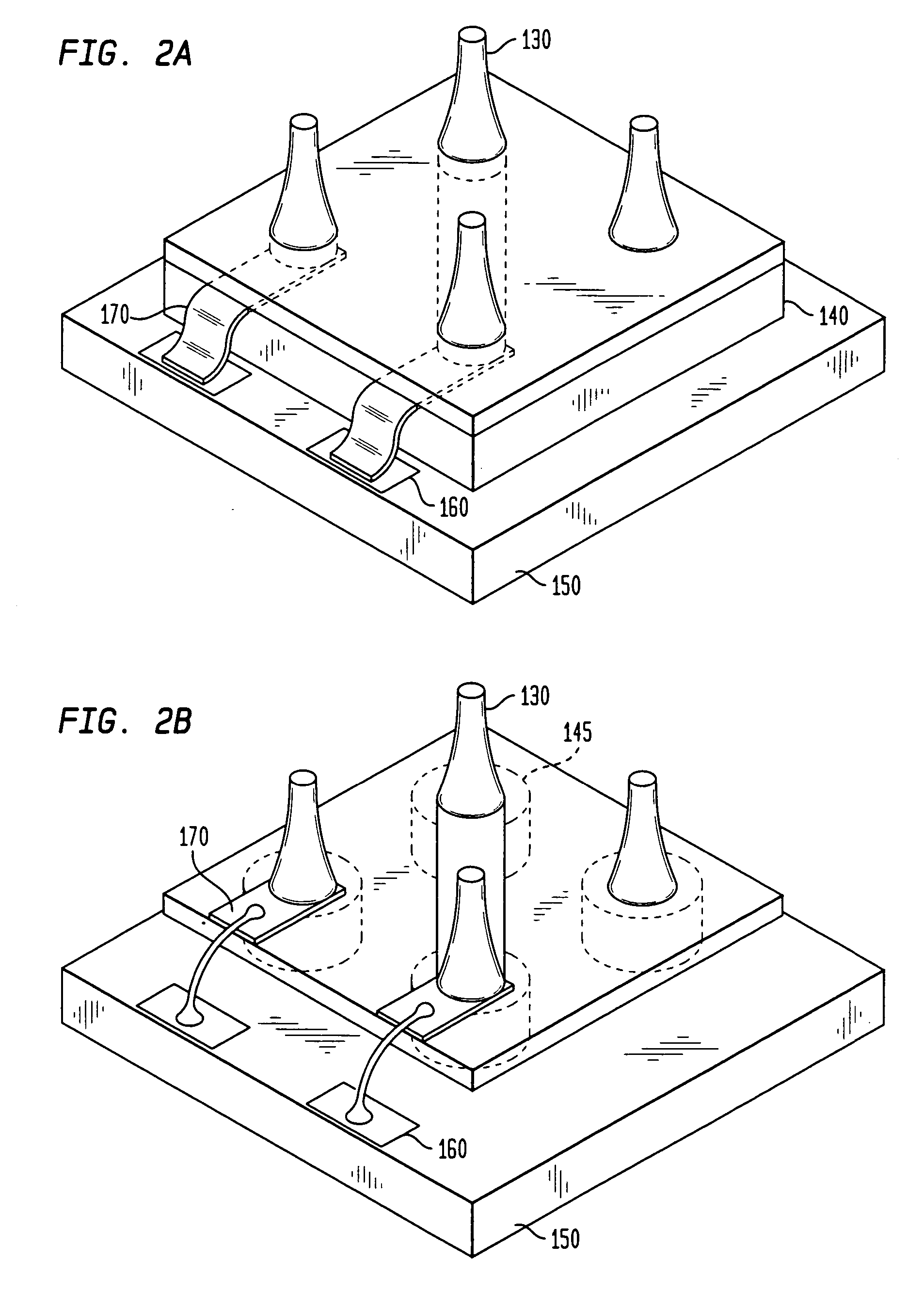Method of electrically connecting a microelectronic component
- Summary
- Abstract
- Description
- Claims
- Application Information
AI Technical Summary
Benefits of technology
Problems solved by technology
Method used
Image
Examples
Embodiment Construction
[0025] Referring to FIGS. 1A and 1B, a top surface of a support structure 100 is coupled to a conductive sheet 110. In the preferred embodiment of the invention, the support structure is a flexible, but substantially inextensible, film preferably formed from a polymeric material, such as Kapton™, of an approximate thickness between 25 microns and 75 microns and is laminated to the second surface of the conductive sheet. However, the support structure could be comprised of many other suitable materials and may further be semi-flexible or substantially rigid. The conductive sheet 110 is preferably comprised of a conductive metal, such as copper, copper alloys or phosphor bronze, among other materials. Portions of the conductive sheet are selectively removed by any suitable means to create a plurality of subtractively created, substantially rigid posts 130, as shown in FIG. 1B.
[0026] In the preferred embodiment, portions of the conductive sheet are removed by first providing a photore...
PUM
| Property | Measurement | Unit |
|---|---|---|
| Electrical conductivity | aaaaa | aaaaa |
| Electrical resistance | aaaaa | aaaaa |
| Flexibility | aaaaa | aaaaa |
Abstract
Description
Claims
Application Information
 Login to View More
Login to View More - R&D
- Intellectual Property
- Life Sciences
- Materials
- Tech Scout
- Unparalleled Data Quality
- Higher Quality Content
- 60% Fewer Hallucinations
Browse by: Latest US Patents, China's latest patents, Technical Efficacy Thesaurus, Application Domain, Technology Topic, Popular Technical Reports.
© 2025 PatSnap. All rights reserved.Legal|Privacy policy|Modern Slavery Act Transparency Statement|Sitemap|About US| Contact US: help@patsnap.com



